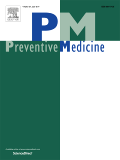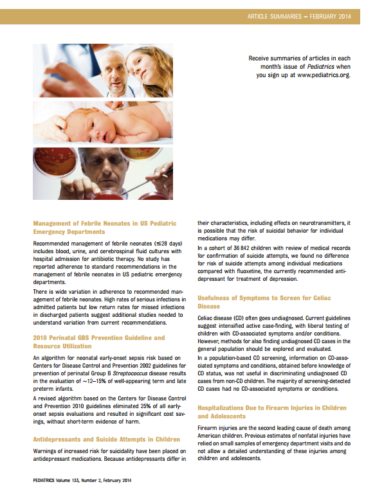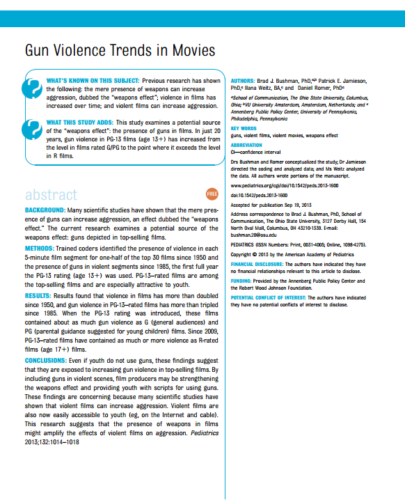Nearly three-quarters of the newspaper stories mentioning suicide and the holidays over the 2012-2013 holiday period perpetuated the myth that more people commit suicide during that season, according to an analysis by the Annenberg Public Policy Center.
Health and Risk Communication
Movie violence associated with sex, alcohol and tobacco use
Nearly 90 percent of the top-grossing movies over a 25-year period show main characters acting violently, and in 77 percent of the movies those characters also engage in sex-, alcohol- or tobacco-related behavior, a new study has shown. The study published in Pediatrics, by researchers at the Annenberg Public Policy Center, found that more than half of the biggest PG-13 movies featured a main character acting violently and involved in either drinking, sexual behavior or smoking within a five-minute segment.
More gun violence in top PG-13 movies than in biggest R-rated films
The amount of gun violence in the top-grossing PG-13 movies has more than tripled since 1985, and in 2012 it exceeded the gun violence in the biggest R-rated movies, according to researchers at the Annenberg Public Policy Center and the Ohio State University. The overall rate of violence in the biggest box-office movies has more than doubled since 1950, the researchers report in "Gun Violence Trends in Movies," published in Pediatrics.
Nursing intervention helps mentally ill people with HIV
Having trained nurses follow up on medication use with mentally ill patients who are HIV positive was effective both at improving the patients’ quality of life and biological markers for the human immunodeficiency virus, according to a new study from researchers at the University of Pennsylvania. The study is thought to be the first to
Study: Cigarette pack warnings more effective combining text and images
Cigarette-pack warning labels that combine graphic images with lengthier explanations of the dangers of smoking were found to be more effective than images or brief warnings alone at convincing smokers to consider quitting, a new study has found. The study, by researchers at the Annenberg Public Policy Center at the University of Pennsylvania and at
Issue brief: Drug Prevention in Schools
Dan Romer, director of APPC’s Adolescent Health and Communication Institutes, reviews the evidence on ways to prevent drug abuse in middle and high school youth, focusing on mandatory random drug testing. Since the 1990s, interest has been growing in the use of such tests to deter drug use among teenagers. The review finds that mandatory
More than half of Philadelphia parents who smoke and have young children allow smoking in the home
In a city with high smoking rates, 52 percent of smokers with pre-teen children in their households said they permit smoking at home, a new study has found. The study, by researchers at the Annenberg Public Policy Center and the Philadelphia Department of Public Health, also suggested that certain antismoking messages, including a focus on


